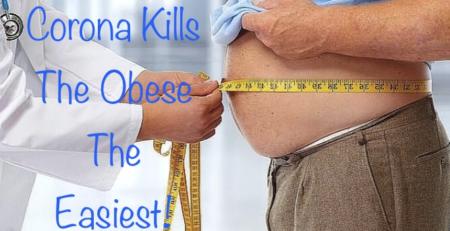Intermittent Fasting
Studying The Effects Of Intermittent Fasting On Health
Intermittent fasting is as ancient as civilisation and has been practiced in all religions for centuries.
An ‘enthusiastic’ paper published by a British doctor over a hundred years ago and lapped up merrily by lay press and very energetically canvassed from time to time by some enthusiastic doctors, all over the world, since the sixties has made sure that it a well known and popular diet.
Some body builders in the West have used intermittent fasting for a long time.
Intermittent fasting includes various kind of diets in which the dieter fasts for different periods of time, with or, more often, without planned calorie restrictions.
Intermittent fasting are diets in which one goes through regular periods of eating and fasting.
It includes a wide variety of patterns.
Some of the well known varieties are:
Time restricted fasting: It involves fasting for 12 hours or longer and eating two or more meals in the rest of the time window.
The 16:8 or 14:10 kind of diets are of this type. On these diets you eat ad libitum during the 8 hour or 10 hour window and fast for 16 or 14 hours respectively.
The 5:2 diet: It involves eating ad libitum for five days and then eating around 500 or 600 calories for two days, sometimes one day at a time twice a week, or on two consecutive days.
Eat stop eat diet: It involves a full 24 hour fast once or twice a week and eating ad libitum for the rest of the week. This is an extreme version of the 5:2 diet.
Alternate day diet: It involves eating ad libitum and going on complete fast on alternate days.
***
Ad libitum means ‘at one’s pleasure’, meaning eating as much as you please, of whatever you please.
***
Available scientific information about intermittent fasting:
Intermittent fasting has generated a fair amount of scientific interest in the last few decades.
Most of the scientific research on the subject has involved animal studies and whatever human studies have been done are of shorter duration and many of them have not taken into account such factors as calorie intake, balance of nutrition and physical activity.
Most of the research on human beings has centred around athletic performance of athletes observing Ramadan. The results are varied, most showing decline in performance of athletes, in both mid and high intensity sports, and none reporting any improvement in performance.
And the results are conflicting, based on the outcome investigated and the methodology used.
Some studies have found worsening of lipids in people gorging on high fat, high sugar, high calorie food in one or two meals than those who nibbled on frequent smaller meals.
This is a very likely outcome, if people will eat two or three high fat, high calorie meals in a window of 10 or even 8 hours and fasted for 14 or 16 hours or even one or two meals in a smaller time window than 8 hours and fasted longer than 16 hours.
Early epidemiological studies have shown increased cardiovascular disease risk on reduced meal frequency and lower total and LDL cholesterol levels in people who reported four or more meals a day as compared to those who reported having one or two meals only.
According to another large cohort study, the Malmo Diet And Cancer Study, the people who ate six or more meals a day had reduced risk of obesity than those who ate three or less meals and the frequent eaters also had lower waist circumference.
On the other hand, animal studies have shown improvement in weight and metabolic markers like blood sugar and blood pressure LDL cholesterol.
According to a 2018 review, different studies show 2.5 to 9.5 per cent of weight and fat loss, but there is little evidence that it is superior to other diets or eating patterns in promoting weight loss.
Calorie restriction is known to improve insulin resistance. After a period of fasting, insulin sensitivity increases and insulin levels drop. These changes result in improved blood sugar levels both during fasting and shortly after eating.
The benefits of fasting also appear to be linked to the Circadian rhythm, which is sometimes also called the ‘body clock’. It is natural for humans to eat during the day and mice to feed during the night.
So the benefits of intermittent fasting are seen when we eat during the day time and fast during the night and exactly the reverse is seen in case of mice.
Abnormal Circadian rhythms may be linked to obesity, diabetes, depression, bipolar disorder, seasonal affective disorder and sleep disorders such as insomnia.
Intermittent fasting may also cause dizziness, nausea, insomnia, syncope (sudden fainting attacks with loss of consciousness), falls, migraine, weakness, excessive hunger, dehydration and hypotension, in some people.
Diabetics are more likely to suffer from these ill effects. Certain drugs prescribed for the treatment of diabetes also increase the risk of developing these illnesses.
Besides these, many people complain of developing severe hyper acidity on these diets.
***
Inference:
There appear to be some benefits of intermittent fasting. Diets based on it could help lower some weight and improve metabolic markers like blood sugar and blood pressure and LDL cholesterol.
These benefits are available only if you don’t gorge on high fat, high sugar, high calorie food in one or two meals during the window of eating. That means you can’t really eat ad libitum.
Eating ad libitum, anything you fancy, as much as you please will not bring you the desired health benefits, even if you follow the rules of intermittent fasting strictly.
It means you still have to eat healthy, you still have to observe the rules of balanced nutrition to get the full benefits of intermittent fasting.
And also the health benefits of intermittent fasting are available only if you follow the Circadian rhythm, that is to eat during the day and fast during the night.
Intermittent fasting is not the only way to improve your blood insulin levels, insulin resistance and blood sugar, much less of losing weight and lowering your blood pressure, total and LDL cholesterol and triglycerides levels and increasing your HDL cholesterol levels.
If intermittent fasting helps people lose between 2.5 to 9.5 per cent of their excess weight, a 5 foot 70 kg lady can lose approximately between under 2 to 7 kg weight and a 5 foot 6 inch 80 kg man can lose approximately between 2 to 8 kg weight.
On the other hand, balanced food in three or more meals a day and exercising regularly can help both lose full 20 kg weight and get completely slim and have much better metabolic markers, especially the abdominal circumference.
***
Intermittent fasting versus balanced nutrition and normal meals:
Intermittent fasting can give you some weight loss and improved metabolic markers.
Most times, intermittent fasting programs are run on mass scale as a diabetes control campaign and not as an individual treatment, individual nutrition is not planned, people are left to choose to their own food, eating ad libitum could be dangerous and exercise may not be a part of the regimen.
Individually planned balanced nutrition in regular meal pattern with three or more meals and regular exercise can give you complete weight loss and much improved metabolic markers.
Those people who habitually eat only two meals a day, viz. lunch and dinner and are not used to having a breakfast, could find intermittent fasting suitable.
Those people who have fixed time slots available for lunch and an early dinner, could find intermittent fasting suitable.
If your work schedule doesn’t allow regular meal hours, intermittent fasting may not suit you.
Many people on intermittent fasting could soon complain of hyper acidity, hunger pangs, possibly headaches and fainting spells.
Such people might not find intermittent fasting suitable.
Some people find it difficult to continue with the intermittent fasting regimen a year or two after starting it successfully initially, for one reason or another and give it up.
There are no long term studies to show how many people stay on, on intermittent fasting long term.
Most people are used to eating at least three meals, including breakfast, lunch and dinner, spread over the day.
So they are more likely to be more comfortable eating in the same pattern all their lives, than switch to eating two meals during a smaller time window.
So it is for you to take a call on which of the two regimens suits you better.
Please also read ‘Basics Of Nutrition’ and ‘Simple Steps To Slimming’ on this website.
***
इंटरमिटन्ट फास्टींग आणि त्या वरील संशोधना विषयी थोडेसे!
हल्ली वजन कमी करण्यासाठी आणि डायबीटिस कंट्रोल करण्यासाठी अनेक लोक एका विशिष्ट पद्धतीचा किंवा प्रणाली चा इंटरमिटन्ट फास्टींग चा डायट करत आहेत.
फास्टींग म्हणजे उपवास करणे.
उपवास करणे ही विविध संस्कृती आणि धर्मांमध्ये अगदी त्यांच्या उत्पत्ती पासून प्रचलित असलेली प्रथा आहे.
इंटरमिटन्ट फास्टींग म्हणजेच विशिष्ठ कारणांसाठी, विविध पद्धतीने केलेले उपवास!
अशा प्रकारचे इंटरमिटन्ट फास्टींग हे काही आजारांवरचे उपचार म्हणून फार पूर्वी पासून वापरले गेले आहेत.
युरोप अमेरिकेत काही बॉडी बिल्डर्स बॉडी बिल्डिंग करण्यासाठी ही अशा प्रकारचे इंटरमिटन्ट फास्टींग एक शतकभराहून अधिक काळ वापरत आहेत.
विविध धार्मिक उपवास ही अशाच पद्धतीचे असतात, फक्त आपण त्याला इंटरमिटन्ट फास्टींग म्हणत नाही इतकेच!
एकोणिसाव्या शतकाच्या सुरुवातीला इंटरमिटन्ट फास्टींग विषयी एका ब्रिटिश डॉक्टर ने प्रकाशित केलेल्या एका ‘एन्थूझिॲस्टीक’ (उत्साही) पेपर ने आणि जगातील विविध नामांकित पब्लिकेशन्स नी तो त्यावेळेस उचलून धरल्याने इंटरमिटन्ट फास्टींग अचानक प्रकाश झोतात आले.
त्या नंतर जगातील विविध डॉक्टर्स नी वेळोवेळी त्याचा उत्साहाने प्रसार केल्याने इंटरमिटन्ट फास्टींग हे सतत प्रकाश झोतात राहिले आहे.
इंटरमिटन्ट फास्टींग मध्ये लोक काही तास उपवास करतात, आणि बहुतेक वेळा उरलेल्या वेळात ‘ॲड लिबिटम’ म्हणजे ‘पाहिजे ते आणि पाहिजे तितके’ खातात. काही वेळा अशा फास्टींग मध्ये कॅलरी रिस्ट्रिक्शन (कॅलरीज कमी करणे) ही प्लॅन केले जाते, पण बहुतेक अशा डायट्स मध्ये फक्त खाण्याची वेळांची बंधने असतात, पण काय आणि किती खायचं ह्याची बंधने नसतात.
इंटरमिटन्ट फास्टींग प्रकारातील काही कॉमन डायट्स असे आहेत:
टाइम रिस्ट्रिक्टेड फास्टींग: ह्या प्रकारा मध्ये बारा तासा पेक्षा अधिक काळ उपवास करणे आणि उरलेल्या वेळात दोन किंवा अधिक वेळा खाणे.
ह्या प्रकारातील फास्टींग मध्ये 16:8 आणि 14:10 हे प्रचलित डायट्स ही येतात. ह्या प्रकारच्या डायट मध्ये लोक 16 किंवा 14 तास उपवास करतात आणि उरलेल्या 8 किंवा 10 तासांच्या ‘विन्डो’ मध्ये ‘ॲड लिबिटम’ म्हणजे ‘पाहिजे ते आणि पाहिजे तितके’, दोन किंवा अधिक वेळा खातात.
सध्या आपल्या कडे प्रचलित असलेल्या इंटरमिटन्ट फास्टींग डायट मध्ये खाण्याच्या विन्डो मध्ये दोन जेवणात काय आणि किती खावे ह्या पेक्षा जे काही खाल ते विशिष्ट वेळात संपवण्याचे बंधन असावे.
ईट स्टॉप ईट डायट: ह्या प्रकारच्या डायट मध्ये लोक अठवड्याभरात एक किंवा दोन दिवस पूर्ण उपवास करतात आणि 5 किंवा 6 दिवस ‘पाहिजे ते आणि पाहिजे तितके’ खातात.
इंटरमिटन्ट फास्टींग प्रकारातील 5:2 हा डायट ही ह्याच प्रकारात मोडतो. ह्या डायट मध्ये लोक आठवड्याभरात 5 दिवस ‘पाहिजे ते आणि पाहिजे तितके’ खातात आणि दोन दिवस उपवास करतात. काही लोक एक आठवड्यात एक एक दिवस दोन वेळा किंवा काही लोक सलग दोन दिवस उपवास करतात.
ऑल्टरनेट डे डायट: ह्या प्रकारच्या डायट मध्ये लोक एक दिवसा आड एक दिवस पूर्ण चोवीस तास उपवास करतात एक दिवस ‘पाहिजे ते आणि पाहिजे तितके’ खातात.
***
सायंटिफिक रिसर्च:
गेल्या काही दशकात इंटरमिटन्ट फास्टींग बद्दल बराच सायंटिफिक इंटरेस्ट निर्माण झाला आहे.
त्या मुळे इंटरमिटन्ट फास्टींग वर रिसर्च ही झाला आहे.
पण हा रिसर्च प्राण्यांवर अधिक आणि ह्यूमन (मानवा वरील) रिसर्च त्या मानाने कमी प्रमाणात आणि काहीसा शॉर्ट टर्म झालेला आहे. आणि त्यात ही बहुतेक वेळा ह्या रिसर्च मध्ये आहार आणि व्यायाम हे फॅक्टर्स विचारात घेतलेले नाही आहेत.
ह्यातील बराचसा ह्यूमन रिसर्च हा रामदान हे उपवास करणाऱ्या ॲथलिट्स च्या परफॉर्मन्स वर झाले आहेत आणि ह्या पैकी बहुतेक रिसर्च मध्ये ॲथलिट्स चे परफॉर्मन्स खालावलेले दिसले आहेत पण परफॉर्मन्स उंचावलेले मात्र एका ही रिसर्च मध्ये दिसलेला नाही.
ह्यूमन रिसर्च मध्ये रिझल्ट्स कॉनफ्लिक्टींग (परस्पर विरोधी) दिसून आलेले आहेत.
काही रिसर्च मध्ये इंटरमिटन्ट फास्टींग मध्ये लोकांची वजने कमी झाल्याचे आढळले आहे पण ते इतर कॅलरी रिस्ट्रिक्टेड डायट पेक्षा अधिक असल्याचे दिसून आलेले नाही.
काही रिसर्च मध्ये इंटरमिटन्ट फास्टींग मध्ये लोकांनी हाय फॅट – हाय शुगर – हाय कॅलरी दोन किंवा तीन मील्स (जेवणे) घेतले असतां त्यांचे लिपिड प्रोफाईल्स अधिक खराब झालेले दिसून आले आहेत.
सुरुवातीच्या इपीडीमिलॉजिकल स्टडीज् मध्ये कमी मील्स (कमी वेळा खाणे) घेणाऱ्या लोकांमध्ये हृदयविकाराचा धोका वाढलेला दिसला तर अधिक मील्स घेणाऱ्या लोकांमध्ये टोटल कोलेस्टेरॉल आणि एल डी एल कोलेस्टेरॉल चे प्रमाण कमी आढळले आहे.
मॅल्मो डायट आणि कॅन्सर स्टडी ह्या मोठ्या स्टडी मध्ये तीन किंवा कमी मील्स घेणाऱ्या लोकांची वजने तीन पेक्षा अधिक मील्स घेणाऱ्या लोकांपेक्षा अधिक असल्याचे आढळले आहे.
ह्या उलट प्राण्यांमधील (उंदीर) स्टडीज् मध्ये इंटरमिटन्ट फास्टींग वर वजन, ब्लड प्रेशर, ब्लड शुगर आणि मेटबॉलिक मार्कर्स (पोटाचा घेर, ब्लड शुगर, ब्लड प्रेशर, ट्रायग्लिसराइड्स, एच डी एल कोलेस्टेरॉल) मध्ये सुधारणा झालेली आढळली आहे.
चार वर्षांपूर्वीच्या, 2018 मधील, एका रिव्ह्यू मध्ये इंटरमिटन्ट फास्टींग वर लोकांची वजने 2.5 ते 9.5 पर सेंट कमी झालेली आढळली पण हे रिझल्ट्स इतर कुठल्या डायट वर असलेल्या लोकांपेक्षा अधिक नव्हते.
म्हणजे पाच फूट उंची असलेल्या 80 किलो वजनाच्या बाईचे वजन 2 ते 7.6 किलो उतरू शकण्या सारखे आहे, जेव्हा तिला 30 वजन कमी करायची गरज आहे.
काही वेळ फास्टींग केल्याने इन्सुलिन रेझिस्टन्स कमी होऊन इन्सुलिन सेन्सिटिव्हिटी सुधारते आणि इन्सुलिन लेव्हल्स आणि ब्लड शुगर्स फास्टींग पिरियड मध्ये आणि थोडा वेळ त्या नंतर कमी राहतात असे दिसून आले आहे.
फास्टींग चे हे फायदे ‘सिरकॅडियन ह्रिधम’ (बॉडी क्लॉक) शी ही कनेक्टेड असलेले ही आढळून आलेले आहे. मानवांच्या बॉडी क्लॉक प्रमाणे दिवसा खाणे नॉर्मल आहे, तर रात्री खाणे ॲबनॉर्मल आहे, म्हणजेच नॉर्मल नाही.
त्यामुळे इंटरमिटन्ट फास्टींग चे पूर्ण फायदे मिळवायचे असले तर आपल्याला दिवसा खाणे आणि रात्री फास्टींग करणे आवष्यक आहे. ह्या उलट करण्याने इंटरमिटन्ट फास्टींग चे पूर्ण फायदे होत नसावेत.
इंटरमिटन्ट फास्टींग वर काही लोकांना थकवा, खूप भूक भूक होणे, गरगरणे, मळमळणे, अचानक शुद्ध हरपणे (सिनकोप), पडणे, मायग्रेन (एक प्रकारची असंह्य डोकेदुखी), शरीरातून पाणी कमी होणे (डीहायड्रेशन), ब्लड प्रेशर कमी होणे असे त्रास होऊ शकतात.
डायबीटिस असलेल्या लोकांना तसेच डायबीटिस साठी घ्यावी लागणारी काही औषधे घेण्याने ही अशा प्रकारचे दुष्परिणाम होण्याचा धोका अधिक असतो.
अर्थातच हे साईड इफेक्ट्स काही काळात कमी होतील असे ह्या लोकांना सांगितले जात असावे.
***
ह्या शिवाय प्रत्यक्ष प्रॅक्टिस मध्ये अनेक लोक इंटरमिटन्ट फास्टींग वर हायपर ॲसिडिटी चा खूप त्रास सुरू झाल्याने ते सोडून दिल्याचे सांगतात. ह्यातील काही लोक पूर्वी कधीच हायपर ॲसिडिटी नसल्याची तक्रार करतात.
आणि काही लोकांना एखाद दोन वर्ष इंटरमिटन्ट फास्टींग केल्या नंतर ही ह्या ना त्या कारणावरून जेवणाच्या त्या वेळा पाळणे जमणे अवघड झाल्याने हा डायट सोडणे भाग पडते असे ते सांगतात.
अर्थातच काही लोक इंटरमिटन्ट फास्टींग यशस्वीपणे करत असतीलच पण ते माझ्याकडे येत नसल्याने त्यांचे म्हणणे माझ्या पर्यंत पोचत नाही.
***
इनफरन्स:
इंटरमिटन्ट फास्टींग प्रकारच्या डायट्स मध्ये 2.5 ते 9.5 पर सेंट पर्यंत वजन आणि ब्लड प्रेशर, ब्लड शुगर, टोटल आणि एल डी एल कोलेस्टेरॉल कमी होऊ शकतात.
पण ह्या डायट्स मध्ये ही तुम्ही ‘ॲड लिबिटम’ म्हणजे ‘पाहिजे ते आणि पाहिजे तितके’ खाऊ शकत नाही.
जर तुम्ही 8 किंवा 10 तासांच्या खाण्याच्या काळामध्ये (विंडो मध्ये) ही एक किंवा दोन जेवणात, अगदी तुम्हाला दिलेल्या विशिष्ट वेळात ही जेवलात तरी ही, हाय फॅट – हाय शुगर – हाय कॅलरी अन्न खाल्लेत तरी ही तुमचे वजन, पोटाचा घेर, ब्लड प्रेशर, ब्लड शुगर, टोटल आणि एल डी एल कोलेस्टेरॉल कमी होण्या ऐवजी वाढू शकतात आणि चांगले म्हणजे एच डी एल कोलेस्टेरॉल वाढण्या एवजी कमी होऊ शकते.
ह्याचाच अर्थ, तुम्ही इंटरमिटन्ट फास्टींग केलेत तरी ही तुम्ही हेल्दी न्युट्रिशन चे नियम पाळले नाहीत, तर तुमचे वजन, पोटाचा घेर आणि ब्लड प्रेशर, ब्लड शुगर, टोटल आणि एल डी एल कोलेस्टेरॉल, ट्रायग्लिसराइड्स कमी होण्या ऐवजी वाढू शकतात आणि एच डी एल कोलेस्टेरॉल वाढण्या ऐवजी कमी होऊ शकते.
तसेच तुम्हाला दिवसा खाणे आणि रात्री उपवास करणे ही आवष्यक आहे.
***
जर तुम्हाला इंटरमिटन्ट फास्टींगच्या कॉन्सेप्ट्स आवडल्या असतील, पटल्या असतील, दोन जेवणाच्या फिक्स वेळा तुम्हाला पाळता येणार असतील, हे डायट्स तुम्हाला सूट होत असतील, अशा आहारावर असताना तुम्हाला अगदी फ्रेश आणि एनर्जेटिक वाटत असेल, त्या वर तुमचे वजन आणि ब्लड शुगर खाली आलेल्या असतील आणि ते आयुष्यभर फॉलो करता येणार असतील, तर तुम्ही तो जरूर फॉलो करा.
पण जर ते तुम्हाला सूट होत नसतील, त्या आहार पद्धतीचा तुम्हाला त्रास होत असेल, तर लक्षात घ्या, वजन कमी करण्याची किंवा डायबीटिस कंट्रोल करण्याची आणि हार्ट हेल्दी होण्याची इंटरमिटन्ट फास्टींग ही जगातील एकमेव ट्रीटमेंट नाही.
दिवसाभरात निदान ब्रेकफास्ट, लंच आणि डिनर ह्या तीन मील्स मध्ये न्युट्रिशनली बॅलन्स्ड किंवा संतुलित आहार आणि ह्या मील्स च्या मधल्या काळात भरपूर दूध आणि फळे खाऊन आणि पुरेसे चालून तुम्ही 2.5 ते 9.5 पर सेंट फॅट कमी करणेच नव्हे, तर पूर्ण स्लिम होऊ शकता आणि तुमचे ब्लड शुगर सकट सर्व मेटबॉलिक मार्कर्स सुधारून अधिक तुम्ही अधिक हार्ट हेल्दी होऊ शकता.
आणि वजन कमी करण्यासाठी किंवा डायबीटिस कंट्रोल करण्यासाठी आणि हार्ट हेल्दी होण्यासाठी कुठल्याही प्रकारचे डायटींग किंवा उपासमार करण्याची आवश्यकता नसते, हे माझ्याकडे ट्रीटमेंट घेणारे कोणी ही तुम्हाला सांगू शकेल!

















Leave a Reply